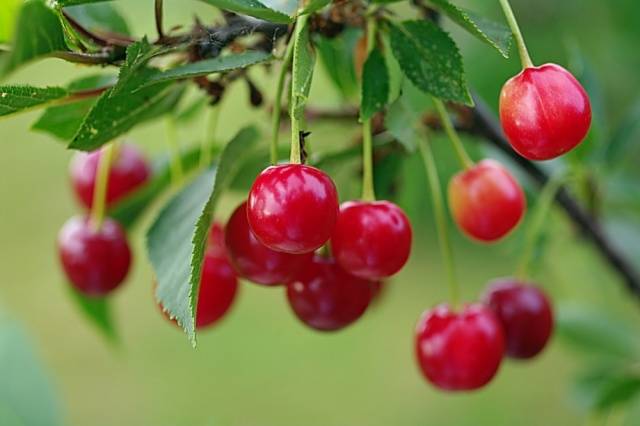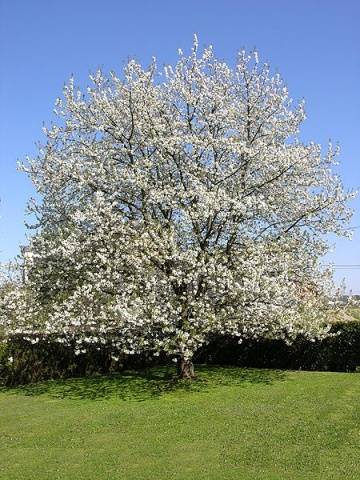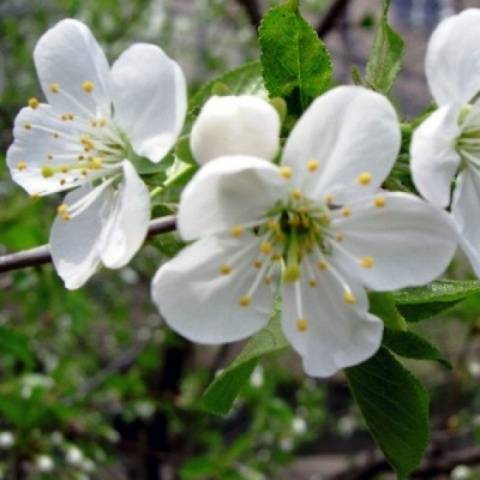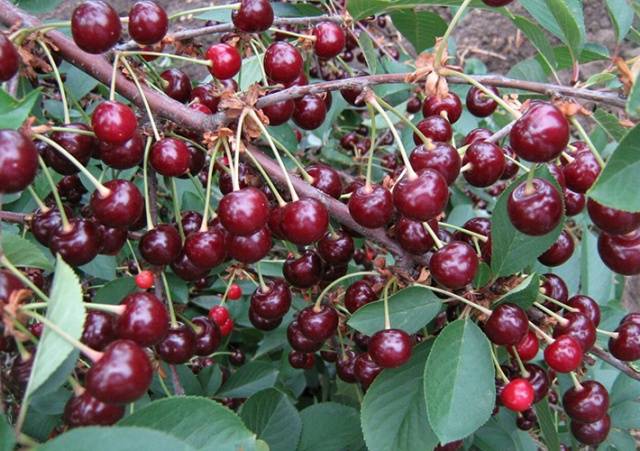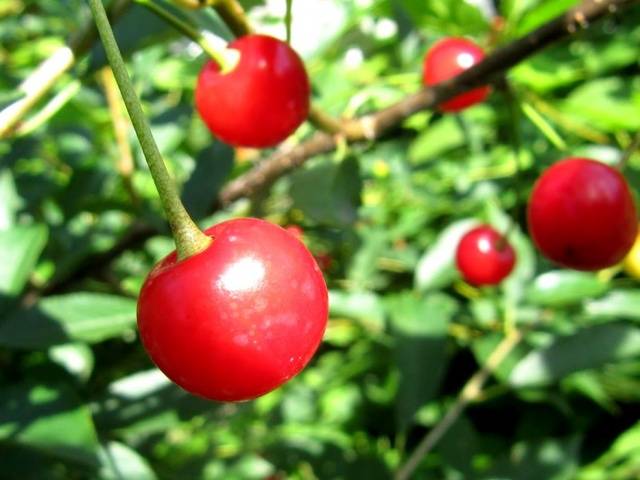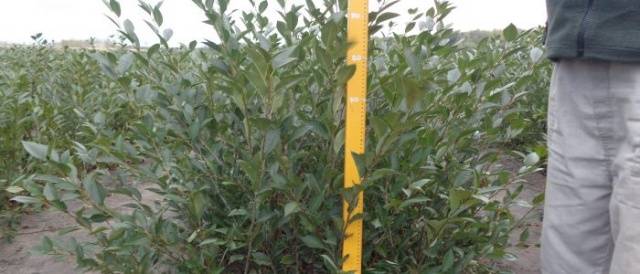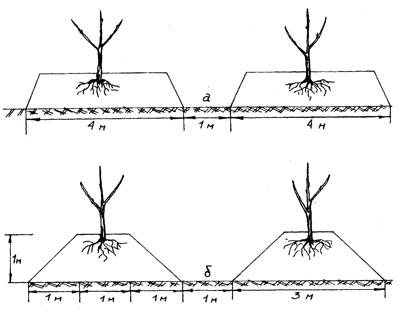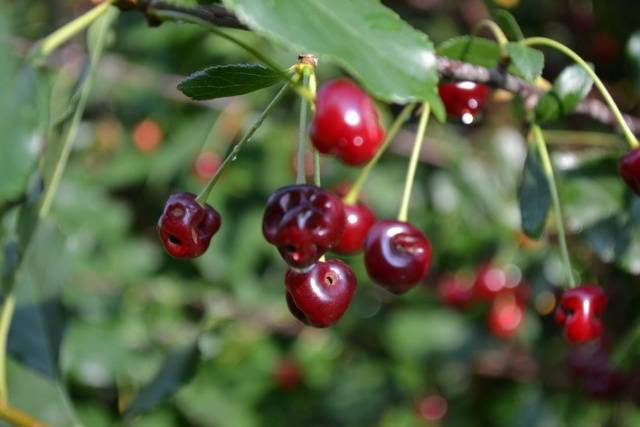Content
Cherry Zvezdochka is liked by gardeners for its qualities - it is early ripe, quite resistant to fungal diseases, tolerates short-term frosts and drought. The tree is medium-sized or tall, depending on the fertility of the soil, gives a stable yield. In the spring, cherries are a decoration of the garden, and in the summer they give bright fruits for homemade preparations.
Breeding history
Cherry of the Zvezdochka variety has spread throughout the country, but now it is no longer possible to name its authors. This is a bright and successful example of folk selection. The variety was obtained by selecting cherry seedlings from the nursery of IV Michurin. It is impossible to determine which cultivar served as a mother plant.
Description of culture
The steppe cherry tree Asterisk, according to gardeners, is of medium vigor or tall and large. Cherry height depends on the type of rootstock, as well as the general agricultural background where the tree is grown. Cherry varieties Zvezdochka forms a pyramidal crown. Although this variety is determined by the average density of the branches, the gardener controls the thickening of the cherry crown by cutting out the branches that grow inward. This is especially important for the middle zone of the country, so that the sun and air currents freely penetrate into the crown of the Zvezdochka variety through the sparse branches. The leafiness of the variety is also characterized by average values. Cherry leaves serrate at the edges, large.
White flowers are collected in large inflorescences. The petioles are long and strong. Cherry berries of the Zvezdochka variety are large, round, uniform, weighing 4-5 g. The skin is thin, with an intense scarlet hue. The pulp, when fully ripe, has a rich light red color. The consistency of Zvezdochka berries is juicy, tender, with a refreshing sweet and sour taste. The juice is pink. The yellowish bones are easily separated from the pulp. The tasters rated the invigorating taste of fresh cherries of the Zvezdochka variety at 4 and 4.2 points.
The asterisk is a favorite of gardeners in the central, Volga and northwestern regions. Cherry easily tolerates winter cold and drought at the same time, thanks to the properties of the mother plant and a powerful root system.
Characteristics
Cherry ordinary Zvezdochka has become a popular variety due to its positive properties.
Drought resistance, winter hardiness
Short-term low temperatures down to -37 aboutC is not a threat to the hardy Zvezdochka cultivar. Fruit and vegetative buds, as experience shows, do not freeze. The correct placement of the tree depends on the gardener, for example, under the protection of buildings, so as not to expose the cherry to the piercing northern winds. Also, the variety will survive without watering and a short period of drought. The seedlings have a more developed root system, which is located at a depth of 10 to 40 cm.
Pollination, flowering period and ripening times
Partial self-fertility is a distinctive feature of the Zvezdochka variety, which is especially interesting for gardeners in the northern regions, where cherries are quite rare. A tree on the site can be planted alone, getting about half of the potential yield. The best pollinators for Asterisk are Wreath and Seedling # 1. The yield will increase with the placement of other cherries or cherries nearby.The Zvezdochka variety blooms in May and is harvested from the beginning of July. The berries ripen together.
Productivity, fruiting
Cherry variety Zvezdochka begins to bear fruit 3-4 years after planting. Berries are mainly formed on the shoots of last year's growth. From one cherry Zvezdochka older than 10 years, up to 20 kg of berries are harvested annually.
Scope of berries
The fruits of the Zvezdochka variety are consumed fresh, used for summer cooking. Compotes and jam are made from berries. The fruits are suitable for freezing and drying.
Disease and pest resistance
This variety of common cherry is moderately resistant to fungal diseases. A gardener thinning the crown will partially protect the tree from the threat of disease. To protect the Star from aphids, garden soil is removed from weeds and too many ants.
Advantages and disadvantages
The popularity of Asterisk cherries is the best proof of its benefits.
- The variety is partially self-fertile;
- High-yielding;
- Good consumer qualities: bright berries, pleasant taste;
- Frost-resistant and drought-resistant.
The disadvantages of the Zvezdochka variety include the possibility of damage during periods of the spread of coccomycosis and moniliosis.
Landing features
Before planting a tree, study the growing conditions of the variety.
Recommended timing
In central Russia, cherries are planted only in spring. During the growing season, the seedling manages to take root and get stronger, already healthy it enters the winter. Even having acquired a tree with a closed root system, it is better to keep within until the end of spring with planting cherries.
Choosing the right place
Cherry does not like the close occurrence of groundwater, as well as places where runoffs accumulate after rains or melting snows. It is advisable to place the tree on a hill, take care of a sufficient amount of light, loose substrate in a hole with neutral acidity.
What crops can and cannot be planted next to cherries
For normal life, cherries of the Zvezdochka variety are left at least 12 sq. m of soil. Nearby, rowan, honeysuckle, those varieties of currants that tolerate partial shade, other low-growing garden crops, but not conifers, are planted. Unwanted neighbors are tall ornamental trees, berry bushes: raspberries, gooseberries. Nothing is planted in the trunk circle. Eggplants, tomatoes should also not be placed next to the Asterisk cherries.
Selection and preparation of planting material
Carefully examine a seedling of the Zvezdochka variety, choosing a tree without scratches on the bark, with fresh buds and roots.
- The trunk is at least 2 cm in diameter;
- Branches 50-60 cm long and more;
- The roots are flexible, moist, not dry to the touch.
After being transported to the planting site, the cherries are placed in a clay mash, adding a growth stimulant. Duration of soaking is 2 hours.
Landing algorithm
The pit for the Asterisk variety is spacious - 80x80x80. Prepare a substrate according to the planting technology, specific for different types of soil, enriched with mineral fertilizers. A hill is poured in the lowlands and a hole is made in the hill. A drainage device is also possible.
- The root collar of a cherry seedling is above the ground;
- Mulch is applied to the watered trunk circle;
- Trim the branches one third of their length.
Follow-up care of the culture
The trunk circle is regularly cleared of weeds, loosened several times per season. Water, if there is no rain, 30-40 liters per tree after flowering and during the growth of the ovaries. Top dressing is carried out in early spring and after flowering with nitrogen fertilizers, watering the soil before that. Organics, along with potash and phosphorus fertilizing, are introduced in the fall, digging up a plot in the garden. The Asterisk cherries are pruned in March, removing branches that thicken the crown, as well as damaged ones. With strong growth for 6-7 years, the conductor is cut off, strengthening the skeletal branches.In the first and second winter, after abundant watering in October, the seedling is wrapped with agrotex or spruce branches before frost, protecting it from cold weather and rodents.
Diseases and pests, methods of control and prevention
Diseases / pests | Signs | Control methods | Prophylaxis |
Moniliosis | The tops of the branches turn brown | Spraying in spring and autumn with copper sulfate or Bordeaux mixture, Kuprozan, Ftalan, Captan preparations | Removing diseased parts, harvesting leaves in the fall |
Coccomycosis | Reddish brown dots on the leaves | Treatment with fungicides Horus, Skor, Kaptan | Early spring treatment with copper-containing agents |
Cherry weevil | The larvae damage the seeds of the berries, which crumble | Spraying after flowering with insecticides according to the instructions | Autumn foliage cleaning |
Sawflies | They eat the leaf, leaving the veins | Insecticide treatment
| Leaves are harvested in autumn |
Aphid | Twisted leaves on the tops of branches | Treat with insecticides or soapy water | Fighting garden ants |
Conclusion
Caring for an early maturing frost-resistant variety is not difficult. A tall tree will look spectacular on the site, and, provided that pollinators are planted, it will delight with refreshing fruits.
